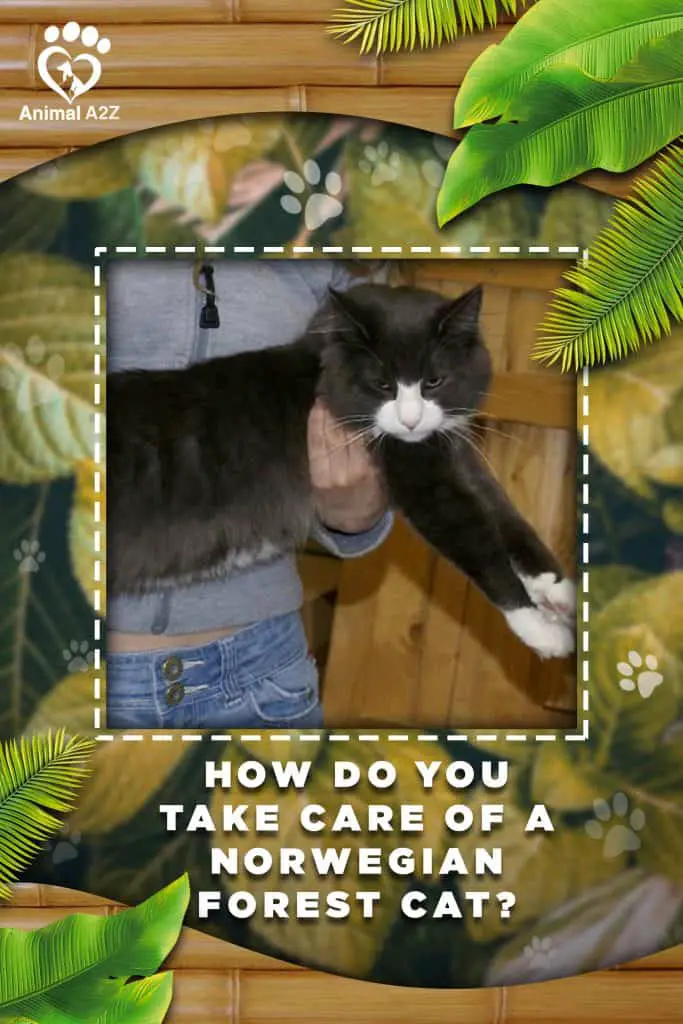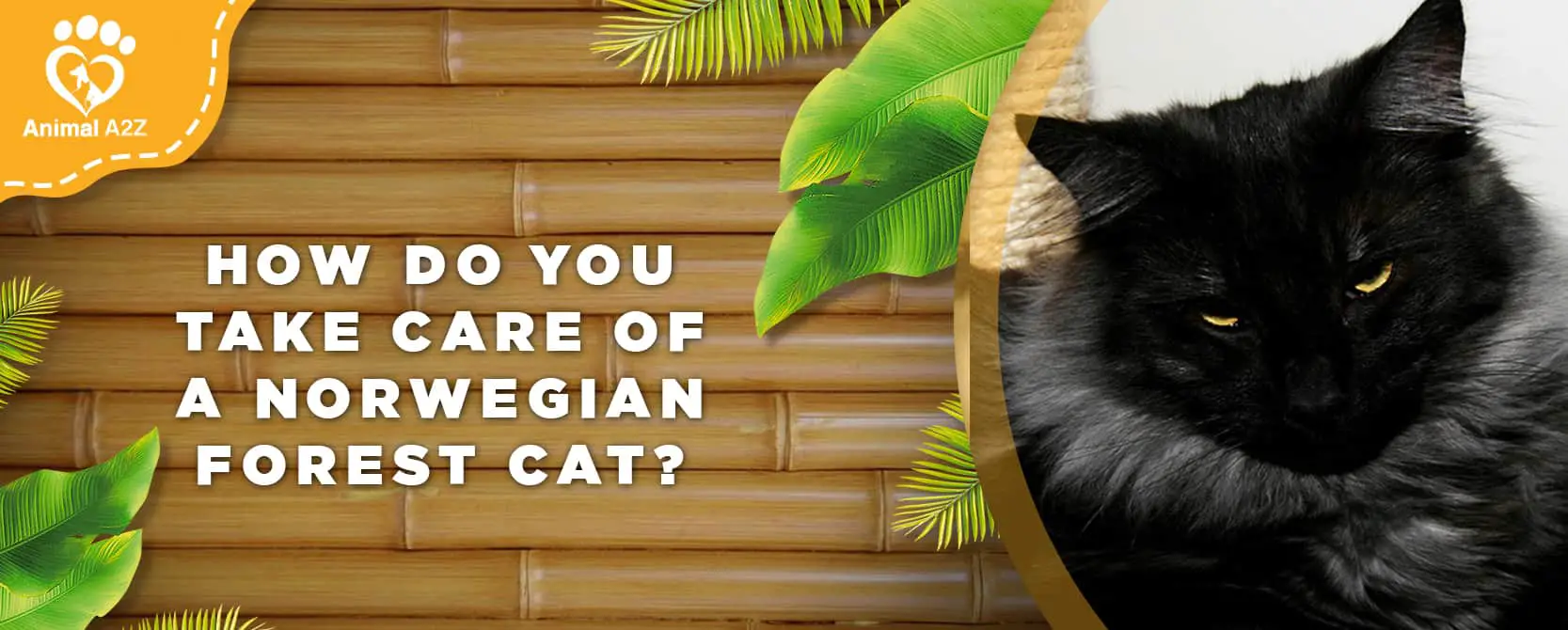The best way to take care of Norwegian Forest Cats is to be educated regarding its grooming needs, the proper nutrients it requires to stay healthy, and learn about the possible health issues of this breed. In that way, owners may know what subject they may be dealing with to give the proper care, attention, and intervention.
Table of Contents
The Physical Attributes of a Norwegian Forest Cats
The overall body structure of a Norwegian forest cat is muscled and well-balanced in length and size. The males are much larger and stockier than the females, which are more refined. The males can weigh up to 12 pounds and more, while the females can weigh up to 10 pounds.
Though they are large, their overall appearance doesn’t look as if they are fat. The head is triangular in shape but has a rounded profile. Their ears’ size ranges from medium to large and is located at the top of the head. The ears give the look of alertness to the overall appearance of the Norwegian Forest Cats.
Meanwhile, the eyes of the Wegie are large and almond-shaped, usually with the color green, gold, green-gold, or copper. They may also come in different shades of green. Some cases of the Wegies may have blue eyes.
The Wegie’s coat is a dense coat, perhaps naturally designed to thrive in Norway’s harsh climate. It’s water-resistant. They may come in different color patterns such as solid, chocolate, sable, lavender, lilac, cinnamon, fawn, point-restricted (Himalayan type markings), shaded, tabbies, and bi-colored.
Looking at the lower part of their body, it’s quite noticeable that Norwegian Forest cats’ hind legs are longer than the front ones. They also have larger paws wherein hairs could be found in between the toes while they have long as well as bushy tail. The base of the tail of a Wegie is broader at the base and is usually proportional to the overall length of the body when measuring from the base of the neck to the base of the tail.
Grooming the Norwegian Forest Cats
Bathing
The Norwegian Forest Cats are quite famous for their long, thick, and waterproof coat, making it a challenge for their owners to give them baths. After baths, the best way to dry their coat is to put them in a naturally-warm environment, or careful use of the hair blower will also do.
Brushing
When it comes to brushing the Wegie’s coat, once or twice a week will do to remove the tangles and knots. During the Norwegian Forest cats’ shedding season, it is better to brush their coat a little more frequently than usual to avoid matting.
Eyes, ears, and teeth
The Wegie’s teeth must be brushed regularly, and the ears must be checked at least once every week, and the eyes to look for any discharge. The best way to clean their ears and eyes is to use a clean and damp cloth or cotton ball so that it won’t be harsh for them.
Litter box
Aside from brushing and bathing the Wegies, another way to ensure the cleanliness of their coat is to keep their litter box neat and clean at all times so that there wouldn’t be any transfer of any dirt from the box to their coats.
Common Health Problems of the Norwegian Forest Cats
The Norwegian Forest Cat’s origin could not be exactly dated as to how long they have been existing. They have been believed to have existed in Norway thousands of years ago. However, they are believed to be a naturally-occurring breed. They are not a hybrid of any wild cat, which means that they do not display common health problems that other mixed or purebred cats may have. However, the Norwegian Forest Cats are still at risk of getting the following diseases, which are most common with their breeds:
Glycogen Storage Disease IV
This is a quite rare but fatal hereditary disease in cats where kittens usually die right after birth or show 5 months after birth.
Hip Dysplasia
It’s a rare problem for cats that affects the hip joints. It is a hereditary disease that will worsen through time and affect the cat’s overall movement if not given a proper intervention.
Hypertrophic Cardiomyopathy
It is one of the most common diseases which cats suffer from. This condition causes thickening in the heart muscle and may be hereditary as well.
Diet and Nutrition
The nutrients needed to be provided to the Norwegian Forest Cat depend on their health issues, lifestyle, size, and age. To maintain a well-balanced and proportioned body of your Wegie, it is very important to strictly follow a diet plan that often includes feeding the right quality and quantity of food. As most common cats do, the Norwegian Forest Cat needs more protein in their diet.
Common questions regarding the Norwegian Forest cat’s health
What does a Norwegian Forest cat eat?
Like most cats, the Norwegian Forest cats are carnivores and require different foods that are high-protein and high-meat diet. They should not be given high amounts of carbohydrates since they will not be able to consume them as most pets do. There are also special foods only for the Norwegian Forest cats to properly cater to their nutrients needs.
Are Norwegian Forest cats picky eaters?
No. There are only some cases in which the Wegie would not eat well. Still, it may be intervened by changing the foods you are feeding them or consulting experts in the field such as reputable breeders or veterinarians.
How long is the life-span of the Norwegian Forest cat?
The Norwegian Forest cat is a naturally-healthy breed. They survived the harsh weather of their origin and thousands of years of voyage with the Vikings. The Wegies can live up to 15-20 years or more if they are properly taken care of.
Wrapping up
The Norwegian Forest cat is just like any cats that deserve to be cared for and provided with enough time, affection, and health care. Although they are quite high-maintenance in some aspects, it is much worth having them not just as pets but as companions and friends which you should take care of at all times.


